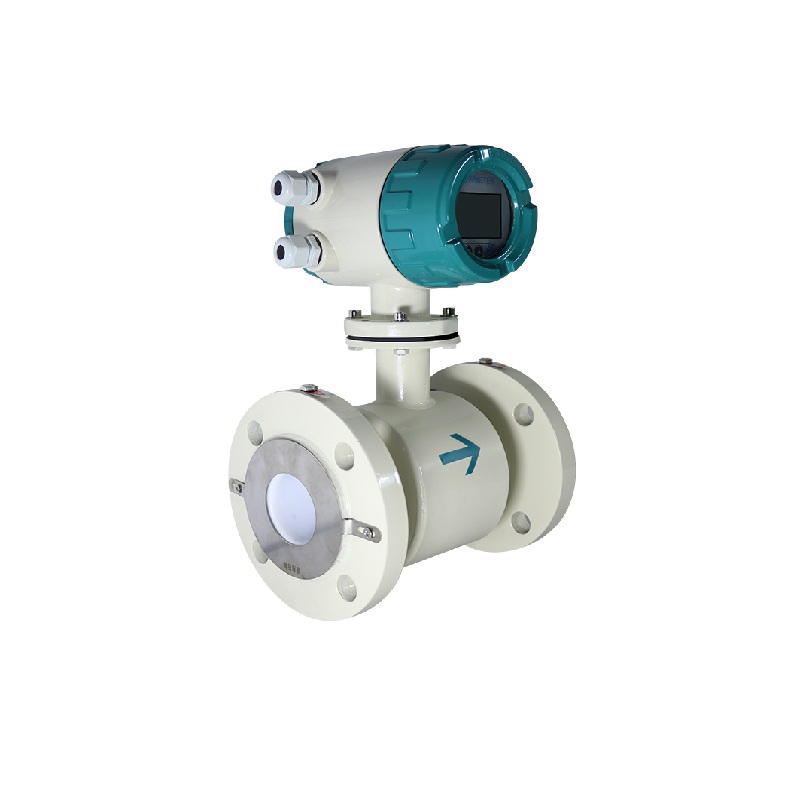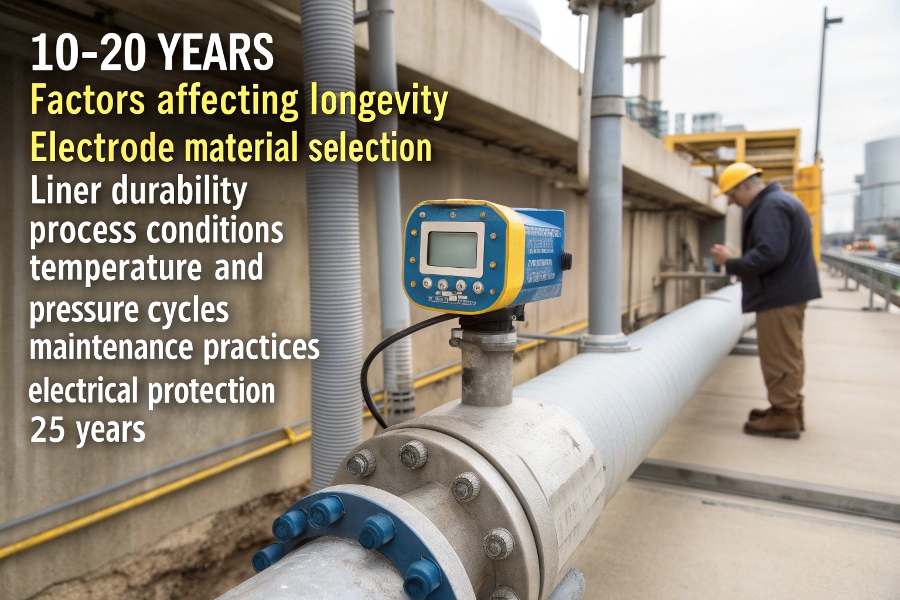Understanding the strengths and weaknesses of electromagnetic flow meters helps professionals make informed decisions about flow measurement solutions.
Electromagnetic flow meters offer excellent accuracy for conductive liquids (±0.2-0.5%) with no moving parts and low maintenance requirements, but they can’t measure non-conductive fluids like oils or pure water and require minimum flow velocities around 0.3 m/s for reliable operation.

Electromagnetic Flow Meter Diagram
With years of experience supplying these meters globally, I’ve compiled these key insights.
What Are the Disadvantages of Electromagnetic Flowmeter?
Every technology has limitations that users should understand.
Main disadvantages include: 1) Requires conductive fluids (≥5μS/cm), 2) Can’t measure gases or steam, 3) Needs completely full pipes, 4) Sensitive to air bubbles/voids, 5) Requires proper grounding, and 6) Not suitable for very low flow rates below 0.3 m/s.
These limitations create specific operational constraints:
Common Problem Scenarios
| Limitation | Practical Consequences | Alternative Solutions |
|---|---|---|
| Non-conductive fluids | Complete measurement failure | Use ultrasonic flow meter |
| Partially filled pipe | Significant measurement errors | Ensure proper installation |
| Low flow velocities | Measurement drops below threshold | Select proper pipe size |
| Slurry applications | Electrode coating issues | Regular cleaning/maintenance |
| Electrical noise | Signal interference problems | Proper grounding/shielding |
| High temperature | Limited to about 180°C maximum | Special liner materials |
What Are the Advantages of Electromagnetic Flow Meters?
These meters excel in many industrial applications.
Key advantages include: 1) Excellent accuracy (±0.2%), 2) No moving parts (low maintenance), 3) Unaffected by viscosity/density changes, 4) Minimal pressure drop, 5) Bidirectional measurement, 6) Works with dirty/slurry liquids, and 7) Large size range (2mm to 3m diameters).
These strengths make them ideal for specific uses:
Ideal Application Cases
| Advantage | Best Use Scenarios | Industry Examples |
|---|---|---|
| No moving parts | Slurry, abrasive fluids | Mining, wastewater |
| High accuracy | Custody transfer measurements | Chemical processing |
| Bidirectional flow | Pipe networks with backflow | Water distribution systems |
| Minimal pressure drop | Low-head systems | Irrigation, gravity flow |
| Wide size range | Large pipe applications | Water treatment plants |
| Viscosity independent | Thick liquid measurement | Food processing, paper pulp |
What Are the Advantages and Disadvantages of Flow Meters?
Different technologies suit different needs.
While electromagnetic meters excel with conductive liquids, other flow meter types overcome their limitations: ultrasonic works with non-conductives, Coriolis handles extreme viscosities, and turbine meters work well with clean fuels – the best choice depends on fluid properties and accuracy needs.
Here’s how electromagnetic compares to alternatives:
Technology Comparison Table
| Feature | Electromagnetic | Ultrasonic | Coriolis | Turbine |
|---|---|---|---|---|
| Fluid Conductivity | Required | Not needed | Not needed | Not needed |
| Moving Parts | None | None | Vibrating tube | Rotating blade |
| Viscosity Limit | None | Affected | None | Affected |
| Pressure Drop | None | None | High | Medium |
| Typical Accuracy | ±0.2-0.5% | ±0.5-1% | ±0.1% | ±0.25-0.5% |
| Best for | Water, slurry, chemicals | Pure water, oil | Custody transfer | Clean fuels |
What Is the Lifespan of an Electromagnetic Flow Meter?
Proper maintenance ensures decades of service.
Typical lifespan is 10-20 years depending on: 1) Electrode material selection, 2) Liner durability, 3) Process conditions (temperature/pressure cycles), 4) Maintenance practices, and 5) Electrical protection. Proper installation and regular calibration can extend operation beyond 25 years.

Electromagnetic Flow Meter Longevity
Several factors influence operational life:
Lifespan Factors and Maintenance
| Component | Expected Life | Failure Signs | Maintenance Tips |
|---|---|---|---|
| Electrodes | 8-15 years | Unstable signal | Clean periodically |
| Liner | 10-20 years | Cracks/bulging | Match to fluid compatibility |
| Electronics | 12-18 years | Display issues | Protect from moisture |
| Grounding | Indefinite | Measurement noise | Annual inspection |
| Calibration | 1-5 years | Drifting accuracy | Follow manufacturer schedule |
Conclusion
Electromagnetic flow meters offer unmatched benefits for conductive liquid measurement but have distinct limitations. When they’re not suitable – like for pure water, oils, or gases – alternative technologies like ultrasonic or Coriolis meters provide excellent solutions. The key is matching meter capabilities to your specific fluid properties and accuracy requirements.
